Facade Cladding, while essentially being the skin of the building, should not merely accentuate the aesthetics but also serve as a shield from extremes of weather and the external environment. This protective layer, while being functional, should also permit the building to breathe while defining its significance and character. The Facade Cladding industry, today, is undergoing many changes in terms of functionality and performance parameters. To create an optimal artificial environment inside the building, the cladding material has to ensure a reduction in energy consumption through the wall of the building. This also means that the cladding material and system have to perform in all types of climatic conditions giving rise to more robust, energy-efficient, innovative and adaptable façade systems some of which are explained below: Rain Screen Façade Cladding (Back Ventilated Façade System): [caption id="" align="alignleft" width="300"] Functional wind protection and privacy along with design sophistication[/caption] Rear-ventilated facades...
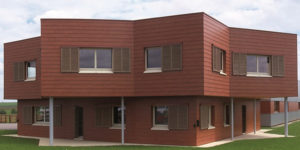
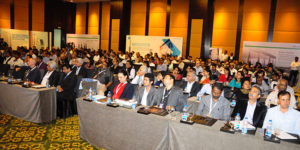
Cultivating Citified Façades
Coming full circle to where it started from, Zak World of Façades returned to Bangalore in its third season with an all new emphasis on the façades for high-rise cluster housing owing to a spurt in the residential demands of the cosmopolitan. The one day conference held at Ritz Carlton Hotel, Bangalore on 19th June saw participation of stalwarts from the construction industry fraternity in India and abroad, sharing their experience to achieve best façade execution practices. After their highly encouraging and successful first & second season around India, the third season of Zak World of Façades started with Mumbai in April 2015 and Bangalore was second in a line of series of events planned. The event was intimate, with a little under 300 attendees who heard a dozen leaders from the industry at the grand conference hall of Ritz Carlton. The theme of the conference organized at Bangalore was...
Posted on: 04 Nov 2015

Panel Discussion on Fire Safety in Façades
The panel discussion on the New Mumbai Fire Brigade Regulations on Glass Façades focused on the following aspects: Architectural considerations while designing fire-safe façades; Perimeter protection - preventing the spread of smoke from floor to floor; and Cladding - the problematic zone. The panel comprised of Atul Bhandari, Director - Design & Projects, RSP India; Praveen Chaubey, Project Manager, Priedemann; Mukesh Jaitley, Director - Projects, The Wadhwa Group; Shrikrishna Ginde, VP - Operations, Belgium Aluminium & Glass; Sunil H Nesarikar, Chief Fire Officer, Mumbai Fire Brigade; SS Warick, Chief Fire Officer & Fire Advisor, MIDC; and Shashikant Jadhav, Chairman, PEATA Committee - Fire Safety Practices with KR Suresh, Regional Director, Axis Façades as the moderator. The panel discussed the new Mumbai Fire Brigade regulation on glass façades. Here is the excerpt from the discussion: During fire, at times building façade becomes a major barrier to evacuate people. Façade consultants, in...
Posted on: 26 Aug 2015
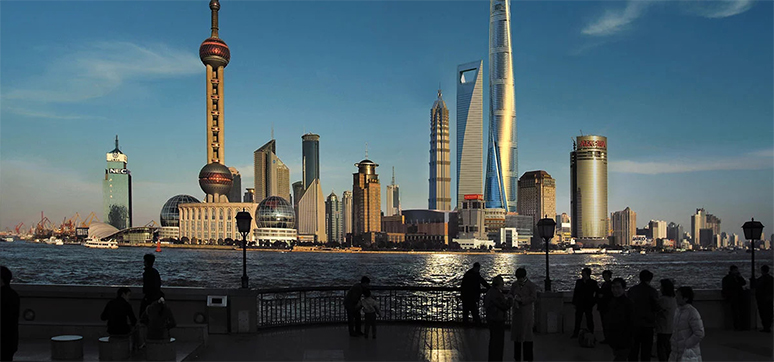
Shanghai 632 Meter Tower Façade Design: The Complexities and Decision-Making Process Involved in Developing the Final Design
ABSTRACT Shanghai Tower is a 124-level, 632m (2074ft) tower, with a gross floor area (GFA) of 380,000m² (4,090,320ft²) above grade. It is arranged in nine vertical zones and is shaped as a combination of efficient footprint with circular floor plates forming stacked cylinders from 12 to 15 stories in height “interrupted” with MEP/refuge floor areas that create zone divisions. These cylindrical shapes are enclosed with a rounded-apex triangle profile as outer skin allowing for introduction of a Sky Garden concept that utilizes the “dual skin” façade approach – atypical double skin façade.In considering the façade design, Gensler introduced a combination exterior and interior curtain wall system resulting in a high-performance façade, totaling 210,000m² (2,260,440ft²) of glazing area. To refine the tower’s shape and respond to its location efficiently, a series of wind tunnel tests were conducted to measure the region’s largest natural forces: the typhoon and other strong prevailing winds....
Posted on: 24 Aug 2015
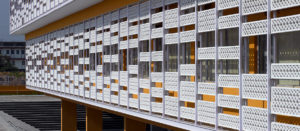
Environmentally Responsive Passive Habitat – PEARL ACADEMY OF FASHION JAIPUR
Introduction: Located in a typical hot dry climate, 20 kilometers further from Jaipur, Pearl Academy of Fashion, boasts of a radical architecture that emerges from a fusion of the rich traditional building knowledge bank and cutting edge contemporary architecture. Various passive environment control methods have been incorporated in the design to reduce the dependence on mechanical methods due to the inherent budgetary constraints and the need to combat the adverse climate. Adaptations of traditional Indo-Islamic architectural elements and passive cooling strategies such as open courtyards, water body, a step-well or baoli and jaalis (perforated stone screen) have been incorporated giving the building a distinct feel of ancient-modern confluence. The Façade: The building is protected from the environment by a double skin façade, which is derived from a traditional building element called the ‘Jaali’ that can be found in abundance in traditional Rajasthani architecture. The double skin acts as a thermal...
Posted on: 09 Jul 2015

Sustainability – A Mass Movement
The enormous economic and population growth worldwide over the last four decades has together driven the impacts that threaten the health and well-being of our communities and nations. To name a few - ozone depletion, climate change, fouling of natural resources and extensive loss of biodiversity and habitat. Amidst this, one word that drives all activities across the globe in today’s time and age is Sustainability. Ranging from ecosystems to buildings, from commercial buildings to urban habitats, you name it and it strives to be sustainable. Leaders in business, government, academia, public interest organizations, and communities are responding with innovative new solutions to sustainability. Large corporations, as well as small businesses, are progressing beyond simple regulatory compliance in favour of more proactive roles in finding solutions to sustainability issues. The Indian building and construction industry is not far behind in this race run for the cause. “For most urban projects,...
Posted on: 24 Jun 2015
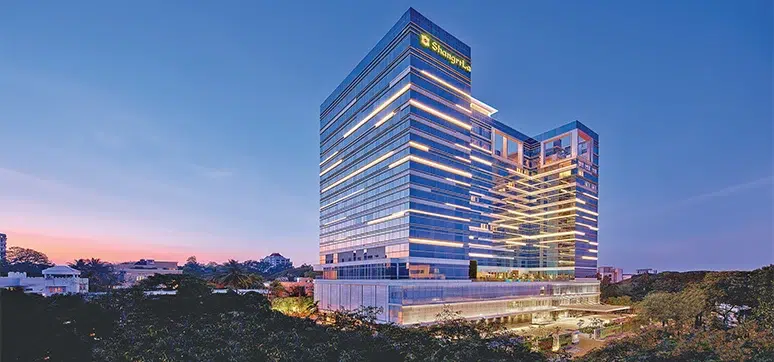
Our Journey has been One of Relentless Innovation and Dedication, Propelling Us to the Forefront of the Cladding Industry
Ashok Kr Bhaiya's influence reverberates across the ACP landscape. His innovative spirit, combined with an unwavering belief in the extraordinary, has forever etched his name in the annals of the industry. In this interview, he takes us through his inspiring journey which reiterates that with vision and innovation, even the most radical ideas can become integral to the very fabric of an industry. Here is the excerpt from the interview. Please tell us about the company Aludecor and its products. When was it established? Aludecor, established in 2002, stands as a proud Indian enterprise that excels in crafting metal composite panels. Our journey has been one of relentless innovation and dedication, propelling us to the forefront of the cladding industry both within India and on the global stage. Our portfolio boasts a diverse array of offerings, encompassing aluminium, zinc, and copper composite panels. In the spirit of continuous progress, we've...
Posted on: 04 Apr 2024
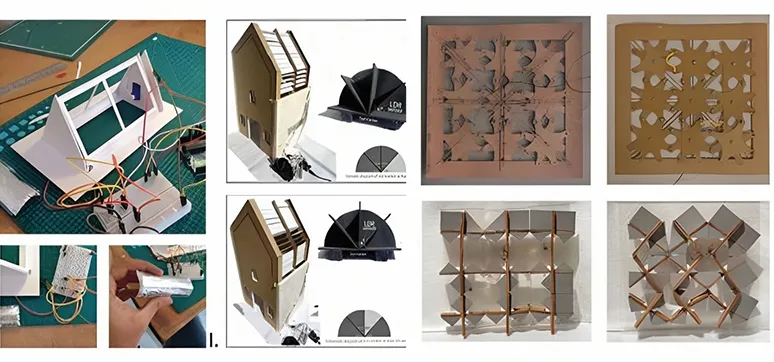
Climate Responsive Façade Designs for Better Energy Efficiency in Buildings
The façade plays an important role in a building as it is the primary interface between the interior and exterior. The façade therefore becomes the crucial element that manages entry for light, heat, sound, dust and a view to the world outside. Additionally, it sets the tone and theme for the design as it is a visual statement for the entire building, like a cover wrapping the book. Especially in the case of public buildings where people enter into an unknown context, the façade can play a role architecturally to invite or ward away, to tower above or to stay grounded, to look rigid or feel playful and the like. From the point of view of sustainability, façade and roof design are of paramount importance in cutting down energy needs. The approach to façade design can be vernacular, that is, using locally available materials and construction technology. This generally tends...
Posted on: 27 Mar 2024
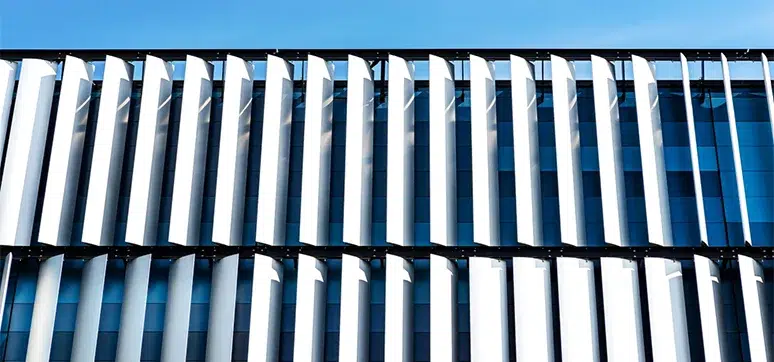
The Future of Façade Design will have a Greater Emphasis on Sustainability – Greater Energy Efficiency, Lower Embodied and Operational Carbon as well as Higher Resiliency
As smart building technologies become more prevalent, how do you see façades integrating with these systems to enhance overall building performance? Integration of façades with smart building technologies has been happening for a while now. The most prevalent example is the integration of shading systems with BMS (Building Management Systems and BAS (Building Automation Systems). This includes internal shading such as blinds and louvers as well as external shading as a part of kinetic façades. Smart glass is also becoming quite popular. Smart glass is one whose VLT (visible light transmittance) changes depending upon external conditions. All of these have served to help façades improve user comfort and energy efficiency of the overall building. The next step in the process of façade integration with building automation that we can hopefully look forward to is the reduction in risks and costs associated with the same. Improvement in data collection and sensors...
Posted on: 04 Mar 2024
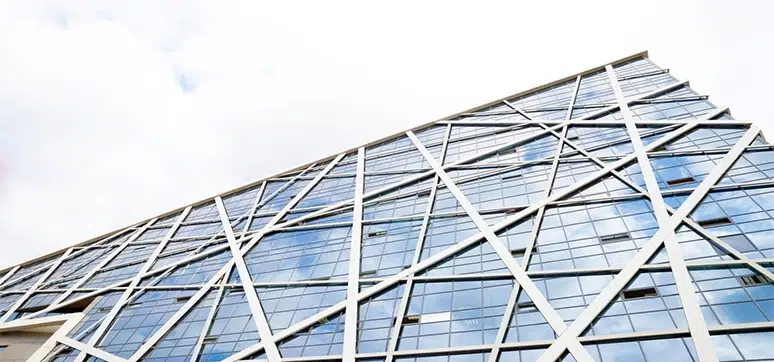
New Generation Façades: Revolutionising High-Rise Design and Performance
Today’s high-rise buildings are shedding their static skins and embracing a new generation of intelligent systems that redefine comfort, performance, and environmental responsibility. This in-depth analysis delves into the world’s most widely installed cutting-edge façade solutions, exploring their general and specific design parameters, performance characteristics, and the materials shaping this exciting evolution. The future of high-rise buildings is being reshaped by intelligent façades, a new generation of cladding and glazing systems that go far beyond aesthetics. These dynamic systems integrate cutting-edge technologies to optimise comfort, performance, and environmental impact, setting a new standard for sustainable and responsive architecture. General Parameters and Specific Considerations for Façade Design Sustainability: Minimising environmental impact through energy efficiency, resource conservation, and responsible material selection. Comfort: Optimising thermal and acoustic insulation, daylighting, and indoor air quality for occupant well-being. Thermal: Maintaining comfortable indoor temperatures through passive and active solar control, natural ventilation, and efficient insulation. Visual:...
Posted on: 28 Feb 2024
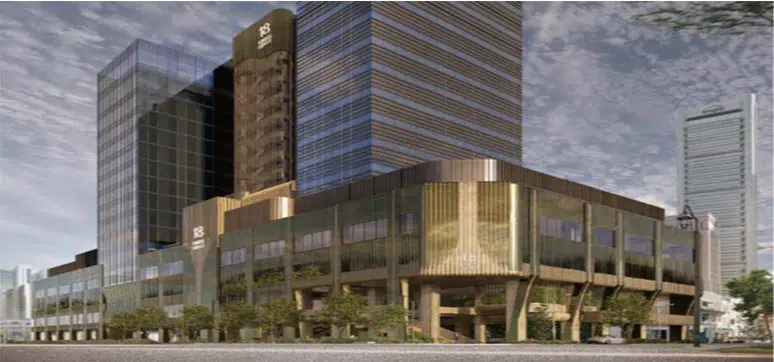
Deep Façades: The Transformational Power of Façades on Adaptive Reuse Projects
''The greenest building is. . . one that is already built.” – Carl Elefante (2007) This article aims to raise awareness of adaptive reuse strategies and the role façade design can play in the transformation of underperforming buildings. The construction industry has been making progress in reducing operational carbon emissions through various strategies and innovations, and progress varies across regions, regulations, and market demands. There is a growing global trend towards adopting more sustainable and energy-efficient building practices. India, at the 2015 Paris Agreement, committed to reducing the emissions intensity of its Gross Domestic Product (GDP). The target is to lower the emissions intensity by 33- 35% by 2030 compared to 2005 levels. Later at the 26th session of the United Nations Framework Convention on Climate Change (COP 26) in November 2021, COP26 announced its goal to achieve net zero by 2070. However, operational carbon constitutes only a portion of...
Posted on: 13 Feb 2024
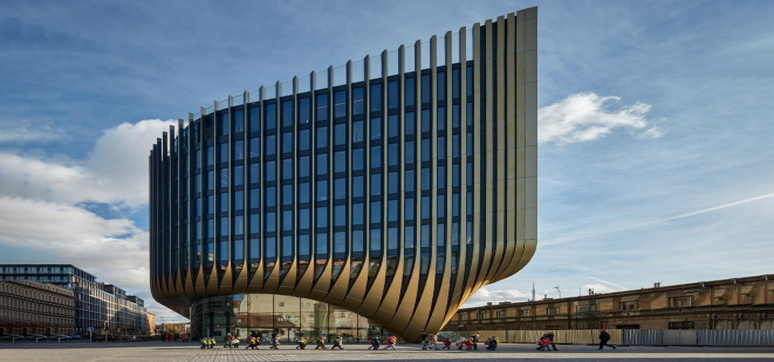
Zaha Hadid Architects Unveils Striking “Masaryčka” High-Rise at Prague’s Railway Hub
In a bold architectural move, Zaha Hadid Architects has revealed their design for “Masaryčka,” a high-rise marvel located adjacent to one of Prague’s major railway stations. Envisioned as a welcoming gateway to the city, the structure caters to suburban and domestic rail passengers, as well as those utilizing the forthcoming express rail link to Prague’s international airport. The 300,000-square-foot development seamlessly integrates with Prague’s Old Town, engaging in a visual dialogue with its historic architecture and urbanism. The complex, housing office and retail spaces, boasts a distinctive design featuring seven stories on its eastern side and nine stories on the western end. Externally, the double-skin façade incorporates fins that serve the dual purpose of solar shading in the summer and a visual transformation of the project’s horizontal composition to match the verticality of the western façade facing the iconic spires of the Old Town. Terraces cascade down the building’s wings,...
Posted on: 04 Jan 2024
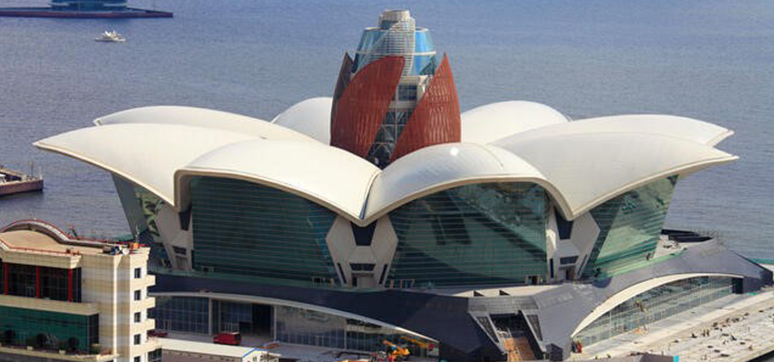
Shaping the Future of Architecture: The Transformative Role of Glass Façades
Glass has become a transformative material in modern architecture, offering a multitude of advantages that go far beyond its aesthetic appeal. As a favored façade material, it allows for sleek and versatile designs, maximizes natural light penetration, and fosters a strong connection with the surrounding environment. Moreover, innovations like low-emissivity coatings have significantly contributed to the energy efficiency of glass, making it a sustainable choice for modern buildings. In regions with abundant sunlight, such as the Gulf, glass façades play a crucial role in optimizing energy savings by reducing the need for artificial lighting and cooling. [caption id="attachment_55528" align="alignright" width="300"] Image Courtesy - Future Architectural Glass[/caption] The choice of glass type and coatings also plays a pivotal role in determining a building’s energy efficiency and thermal performance. Factors like double or triple glazing, Low-E coatings, and tinted or reflective glass impact insulation and solar control, make it essential to consider...
Posted on: 18 Dec 2023
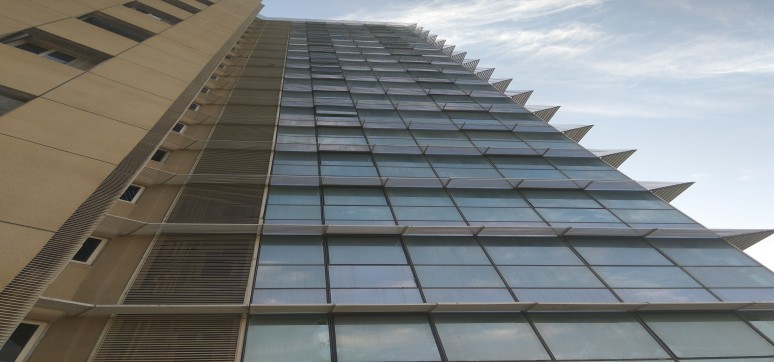
Glass Façades for High-Rise Buildings
The word ‘Façade’ means ‘Face’ in French, and a building’s façade is actually the front of a building and its face. Glass walls on the exterior of buildings are widely used to improve the beauty, keep the interior temperature in check, and allow enough natural light to enter which gave rise to the increasing use of glass. Some of the advantages of using glass in high-rise buildings: Efficiency: The glass façade on the exterior of the building allows an optimum level of natural light to enter, which reduces the cost of lighting. Safety & Maintenance: The key factors to consider while designing a façade are safety, longevity, and maintenance. Glass has a smooth glossy surface, so it is dustproof and can be cleaned efficiently. Unlike other materials, it is easy to maintain. Strength & Weather Resistance: The materials used in glass façades are extremely strong and durable. They are designed...
Posted on: 07 Dec 2023
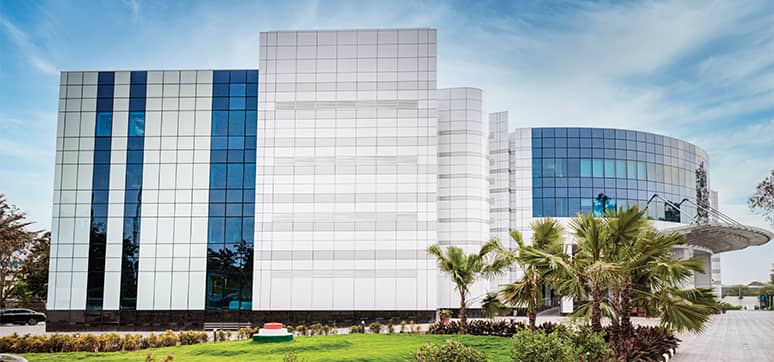
Performance and Aesthetics are the Key Elements to Look for
Glass façades have become increasingly popular in contemporary/high-rise buildings due to their numerous advantages. One of the most significant benefits of glass façades is the ability to allow natural light to penetrate deep into the building’s interior, creating a more pleasant and productive work environment for occupants while also reducing the need for artificial lighting during the day. [caption id="attachment_54834" align="alignleft" width="300"] .[/caption] This can improve the energy efficiency of the building and lower operating costs. In addition, glass façades can provide a sleek, modern appearance that is often desired in contemporary architecture.They can also offer unobstructed views of the surrounding environment, creating a greater sense of connection to the outdoors. Modern glass technology has also improved the thermal and acoustic performance of glass façades, making them more energy-efficient and able to reduce noise transmission. They are designed to be durable and long-lasting, withstanding extreme weather conditions and resisting damage...
Posted on: 08 Nov 2023
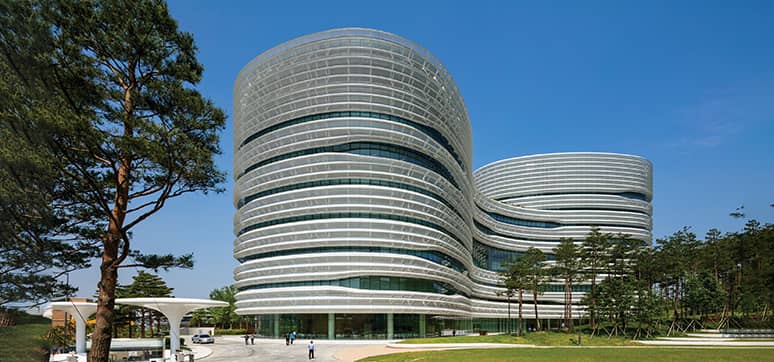
CJ Blossom Park, Suwon, South Korea
CJ Blossom Park in Suwon, South Korea, designed for one of Korea’s largest companies, consolidated the corporation’s previously disparate pharmaceutical, biotechnology, and food products businesses into a single location. [caption id="attachment_54779" align="alignright" width="414"] Concept sketches[/caption] The building’s architecture, which was designed by the Yazdani Studio of CannonDesign, is inspired by CJ’s brand identity—defined by a three-petal blossom. These are represented by three elliptical towers of differing heights, each housing one of CJ’s divisions. The towers rise around a central atrium that cultivates interconnectivity and engagement with fluid circulation and natural light. An outer-pleated perforated screen wraps around the entire complex and shades the floor-to-ceiling semi-unitized glazing, providing an even distribution of light deep into the building. By carefully coordinating pleat folds and screen densities with building orientation and program elements, this secondary skin enabled the team to place full-height glazing around the entire perimeter of the building without negatively impacting...
Posted on: 02 Nov 2023

